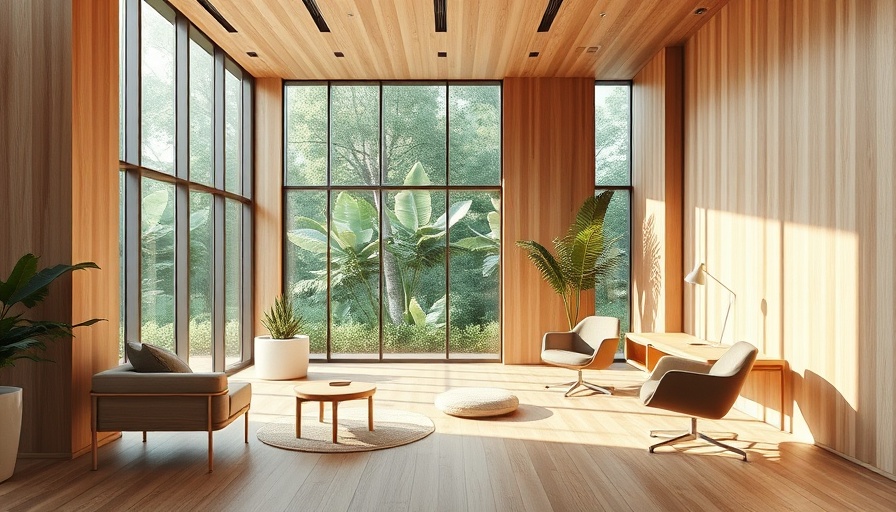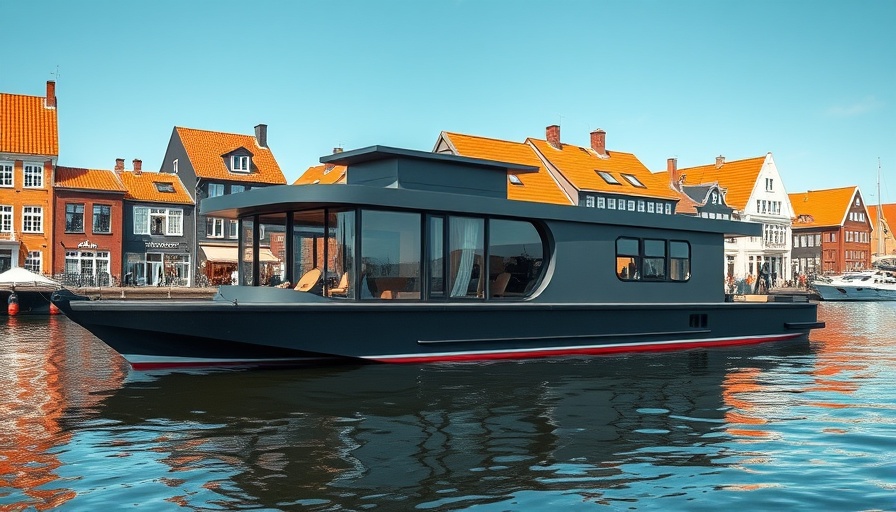
Transforming Urban Living: Insights from the Heart of Tel Aviv
In the vibrant Levontin neighborhood of Tel Aviv, a unique apartment project known as the Urban Refuge is redefining the concept of compact urban living. Designed by the renowned architectural duo Baranowitz + Kronenberg, this 506-square-foot residence harmoniously blends the bustling energy of city life with the calming forces of nature.
The Urban Refuge isn’t just a space to live; it’s an immersive experience designed to function as both home and workspace. Central to its design is the liberal use of Douglas Fir wood, embodying a biophilic approach that promotes a sense of tranquility amid the urban chaos. This organic material not only warms the space but also invites creativity, making it an ideal environment for focused work without feeling claustrophobic.
The Power of Biophilic Design in Urban Settings
Biophilic design is more than an aesthetic choice; it's a crucial element for urban dwellers seeking peace and connection to nature. Empirical evidence supports that introducing natural elements into living spaces significantly enhances well-being and productivity. As reflected in the Urban Refuge, the continuous use of natural materials aids in creating a soothing atmosphere that counteracts the stresses associated with city life.
Additionally, biophilic design enhances air quality and energy efficiency, two essential factors in urban living. The integration of windows that maximize natural light and the strategic placement of greenery not only beautifies the space but also promotes healthier living conditions, aligning perfectly with modern sustainability values.
Innovative Space Utilization: Practical Tips for Compact Living
Living compactly requires smart design decisions. The Urban Refuge is characterized by an ‘L’-shaped layout that maximizes every inch while ensuring a cohesive and functional flow of space. Families and individuals looking for practical solutions in smaller homes can draw inspiration from this model by incorporating multipurpose furniture and thoughtful storage solutions.
Here are a few actionable insights for optimizing space in your home:
- Multipurpose Furniture: Consider items that serve dual functions, like a sofa bed for guests or coffee tables with built-in storage.
- Vertical Storage: Utilize wall space for shelving and cabinetry to keep floors clear while enhancing aesthetic appeal.
- Natural Elements: Introduce plants not just for decoration but also for air purification and stress reduction—key tenets of biophilic design.
Community and Nature: Bridging Socioeconomic Gaps
The Urban Refuge exemplifies a broader trend in architecture—using biophilic design to tackle urban isolation and inequity. As cities evolve, integrating green spaces becomes essential not just for aesthetics but for fostering community ties. Public parks, community gardens, and green roofs serve as social equalizers, offering everyone, regardless of their socioeconomic status, access to nature and its benefits.
Research shows that environments rich in natural features can improve mental health and social well-being. For instance, initiatives like Singapore's “City in a Garden” campaign reflect this by introducing greenery into dense urban areas and have seen improved quality of life for residents. Similarly, places like New York's High Line serve as models for combining recreation and community engagement, illustrating the power of thoughtful urban design.
Looking Ahead: The Future of Urban Spaces
As urbanization accelerates, the need for designs that seamlessly integrate nature into city living will only grow. With next-generation biophilic design trends including smart homes, which utilize technology to enhance natural elements, and sustainable building materials, the future holds promise for healthier, more connected urban environments.
Can your living space similarly embrace this approach? Join the conversation about biophilic design and explore ways to transform your urban living experience into a nature-inspired retreat. This is not merely a trend; it is essential for our well-being now and in the future.
 Add Row
Add Row  Add
Add 






Write A Comment